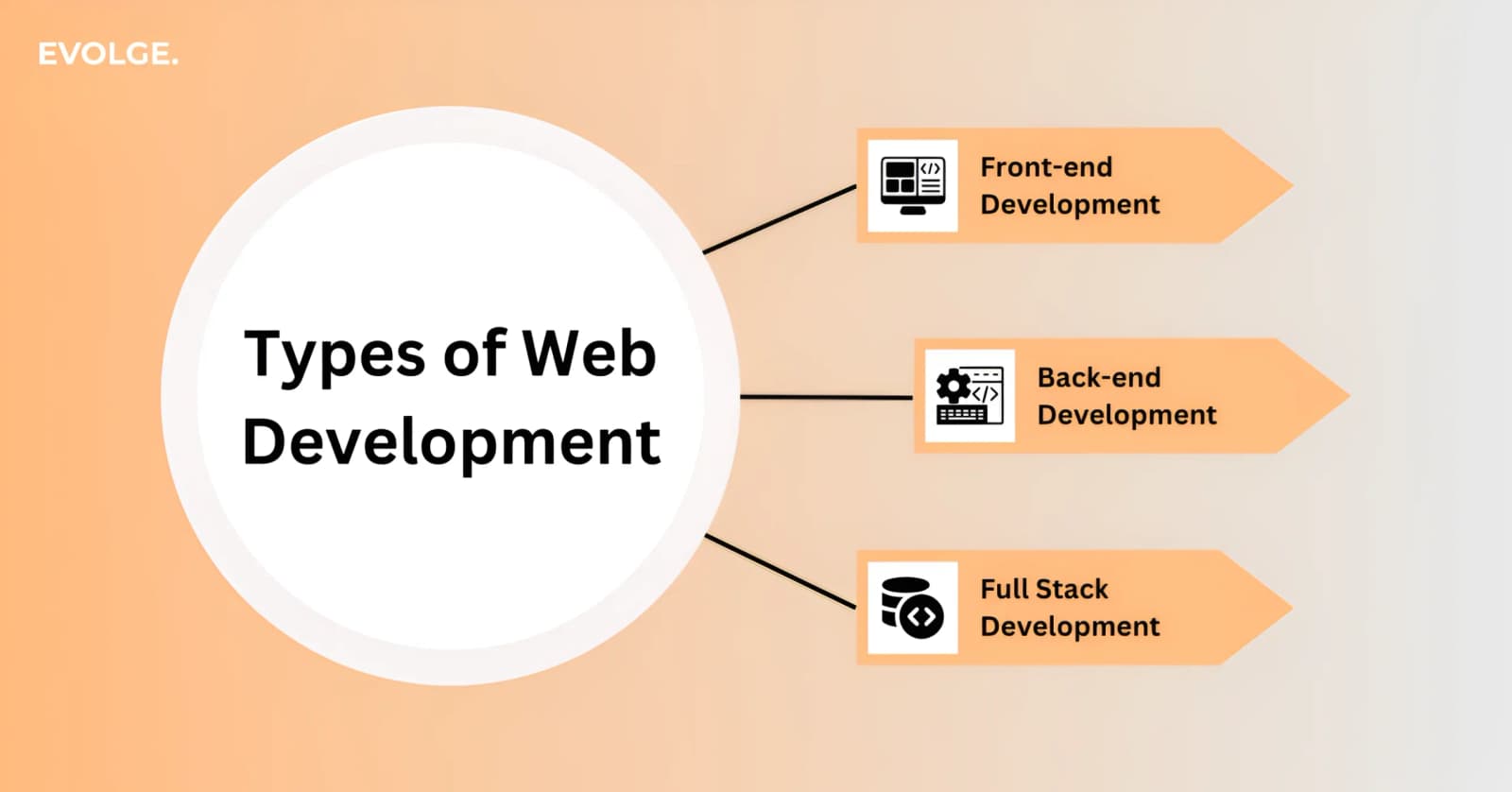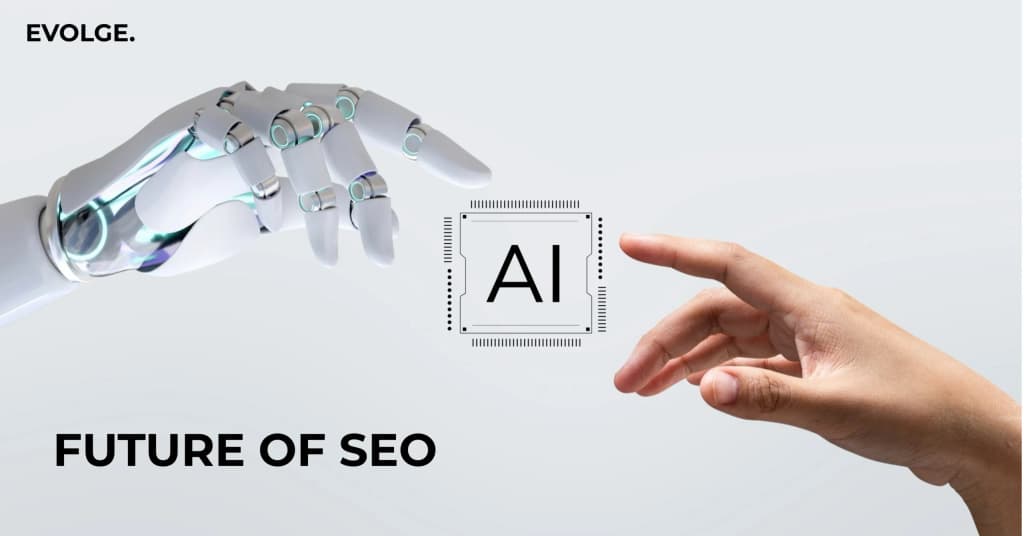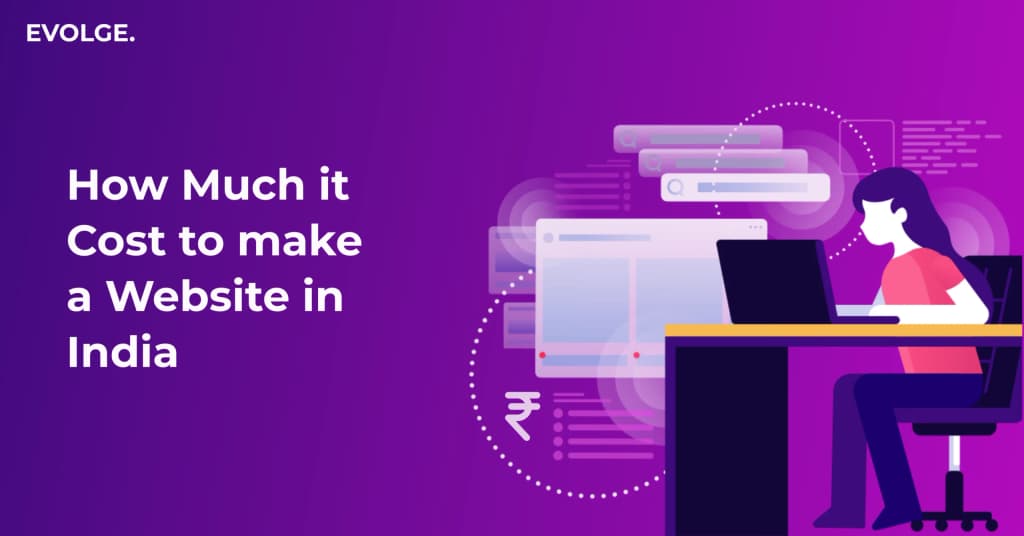Types of Web Development

Did you know a whopping 88% of website visitors won’t return after a bad experience? That’s nearly 9 out of 10 potential customers lost.
Your website is your online revenue generator; it needs to impress. Be it through stunning visuals or lightning-fast speed, you must capture your visitors’ attention within fractions of a second.
That’s where web development comes in—the process of building a website that looks great and delivers an exceptional user experience.
In this blog, we’ll break down the 3 key types of web development you must know to find the right web development services.
What Is Web Development?
Web development is the art of building, designing, and maintaining websites. It can be something as simple as a static web page or as complex as an e-commerce website.
Web developers are responsible for creating websites and regularly updating them to fix bugs, add new content, and optimize their performance.
3 Types of Web Development
Depending on the goal, web development can be divided into 3 main types:
Front-end Web Development
Front-end web development refers to building the “front or client-side” of a website—the part with which the user directly interacts. This includes website design and user experience.
The front-end web development process involves the following core technologies:
- HTML
It provides structure and layout for a webpage, thus acting like a skeleton for your website.
- CSS
Front-end developers use CSS to arrange the HTML elements and stylize them (colors,fonts, animations).
- JavaScript
JavaScript makes your website dynamic and super-functional so that the user can interact with it.
Angular, Vue, and ReactJS are front-end frameworks that allow developers to create reusable elements. Bootstrap and jQuery, on the other hand, help improve a website’s responsiveness and cross-browser compatibility.
You don’t need to hire a software engineer for front-end development. Web design service providers can help you with creating user-friendly websites.
Back-end Web Development
Back-end development means building the logic or the infrastructure that supports the front end. Since it includes service-side logic, database interactions, and APIs, it’s also called “server-side” web development.
The back-end web development process involves the following core technologies:
- Python
It is an easy-to-code programming language, often used with the Django framework.
- Ruby on Rails
It is a back-end framework that uses Ruby (programming language) to create robust and scalable web applications, like an e-commerce website.
- PHP
PHP is an open-source scripting language that’s versatile and allows easy integration with many databases.
- Node.js
Node.js is a JavaScript runtime environment. With Node.js, developers can code in JavaScript from the server end.
- Databases
Web developers use relational and NoSQL databases to store and manage a website’s data. For example, MySQL, PostgreSQL, MongoDB, Cassandra, etc.
Full-stack Web Development
The third type of website development is termed “full-stack” since it consists of developing both the front and the back end.
Full-stack developers are thus responsible for everything—from creating server logic to managing databases to designing user interfaces.
Besides the technologies used in front and back-end development, full-stack developers also work with:
- APIs
APIs like REST and RESTful are used to connect different parts of a website for seamless interaction.
- Version Controls
These are necessary tools to track changes and collaborate with other developers working on the same project.
- DevOps
DevOps technologies like Kubernetes and Docker are essential for turning applications into containers and then deploying them.
Difference Between Front-end, Back-end, and Full-stack Web Development
Below is a detailed comparison between the three different types of web development:
| Aspect | Front-end | Back-end | Full-stack |
| Area of focus | User interface and user experience | Server-side logic, databases, and application functionality | Focuses on areas covered by both front and back-end development |
| Programming Languages Used | Not programming languages, but core technologies used are: HTML,CSS, and JavaScript | PHP, Java, Ruby, Python, Node.js, #C | Combines front-end technologies with back-end programming languages |
| Frameworks/Libraries Used | React, Angular, Vue.js | Django, Ruby on Rails, Spring, Laravel | A mix of both front-end and back-end frameworks |
| Tools Required | Code editors, CSS preprocessor, design and prototyping tools | Server management tools, database management systems | Version controls, APIs, DevOps tools |
| Examples | Creating website layout, adding animation, improving load time, etc. | Managing user authentication, storing data securely, building APIs for interconnectivity, etc. | Designing, developing, and deploying websites; integrating front and back ends |
Which Web Development Approach Is Best for Your Website?
Here’s an easy way to decide which web development approach to go with:
- Are you building a static website with the sole aim of user experience or visual appeal (like a blog or portfolio)? If yes, choose front-end development.
- Will your website handle large amounts, of data or sensitive information? Do you want a scalable website that can tackle increasing traffic? If yes, back-end development is the right method.
- Do you need to quickly build a website with a focus on both front and back-end work? Hire a web design and development company for a full-stack approach.
Bottomline
Be it front-end, back-end, or full-stack web development—all three require technical expertise to serve the purpose.
That’s why it’s important to hire a web development service provider, who can assist you in developing a static or dynamic website (and maintaining it).
At Evolge Technologies, we offer comprehensive web development solutions tailored to your specific needs. Whether you need a flashy website or wish to convert browsers into buyers, we’ve got you covered.
Contact us today to get started!


